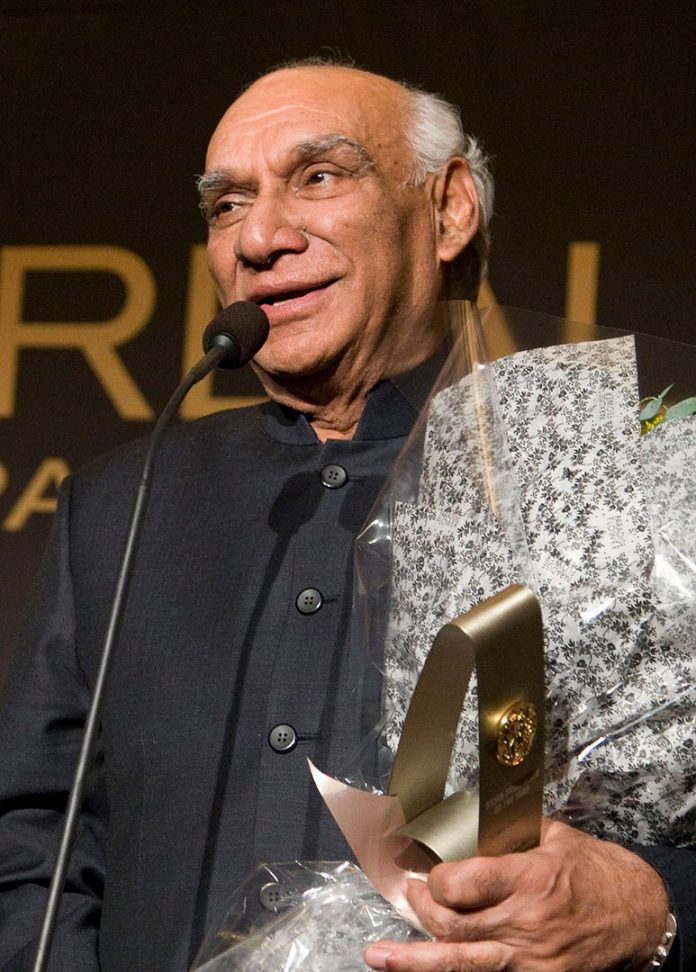When Yash Chopra started directing, he hadn’t known that one day, he would become one of the most influential directors in Bollywood history.
He also hadn’t known that when he died in 2012, he would take the charm out of Bollywood and cause a decade long identity crisis in his wake.
Chopra’s works rarely were formulaic. Beginning with movies like 1959’s Dhool Ka Phool, about a Muslim man raising a Hindu child, and 1961’s Dharmputra, a drama about the partition of India, Chopra had already set out with high expectations of himself and of the people around him.
In the coming years, Chopra would make movies about polygamy, Indo-Pakistani relations, age-gap romances and socio-political unrest. He preferred directing romantic movies more than any other genre, going as far as to change the violent-action movie trends in the ’80s.
In the Netflix series The Romantics, Amitabh Bachchan said “Yashji never lost his mind towards nature and towards romance even when he was doing a film like Deewaar.”
His work featured women in roles where they not only made sense to the plot, but they were the ones generally pushing the plot along.
Born in colonial India, in what is now known as Punjab, Pakistan, Chopra was the youngest of eight children and his second older brother was a prominent movie producer at the time.
With his death by dengue fever in 2012, the charming impression of Bollywood also died. He created a sense of nostalgia for both his own movies and the movies which released around the same time.
With this loss, Bollywood could not find the right footing for nearly a decade. Since 2012, many Bollywood fans have noted a rise in uninteresting and uninspired works. Copied music and plot was a problem in Bollywood already, but now fans must deal with remade work by the hundreds, every year.
The biggest issue in Bollywood currently is conflicting themes in real life and lacking plots which take viewers out of the experience.
One of Chopra’s most beloved movies is 2004’s Veer-Zaara, a movie about an Indian Air Force pilot and the daughter of a prominent Pakistani politician falling in love. Through unforeseen circumstances, the pilot spends 22 years in jail for a crime he did not commit.
While the movie contains themes of feminism, secularism, and is lauded for it’s portrayal of the India-Pakistan relations, it is the in-real-life socio-political themes which make the movie interesting. Veer-Zaara comes only five years after the 1999 Indo-Pakistan ‘Kargil’ war.
During a time when war movies are commemorated and being pushed by the dozens, Chopra’s Veer-Zaara shows a different side. It shows a closeness in both language and in cultures. It pours love into the Punjabi culture, though the decision to cast Amitabh Bachchan in the movie is a controversial one.
With his death came a loss of identity for the people of Bollywood. Figures in Bollywood want to be taken serious in the west, but they also want to compete with all the other language industries gaining popularity since then. They rely heavily on the big action blockbusters of the year to continue funding their one thousand movies per year.
“So dad was never a businessman. He was always a director first, a producer second,” said his eldest son, Aditya Chopra on Netflix’s The Romantics.
Right now, Bollywood pushes out a lot of ‘content’. In the last ten years, it has been difficult to watch a mainstream Bollywood movie which isn’t a money-making scheme. Many of the movies rely heavily on South Indian directors and South Indian culture, which hasn’t lost its character and personality.
But the creation of a Pan-India movie industry cannot be built when the foundation is so weak and lacking in North India. There are individual language movie industries such as Gujarati, Bengali, and Punjabi, but they are not built to work with record figures like Bollywood is.
Currently, there are still directors like Sanjay Leela Bhansali who are still producing creative and artistic movies but Bhansali only produces four movies every decade. It isn’t enough to sustain an industry as big as the Bollywood.
Chopra’s death created a vacuum. The charm and progressiveness of his movies as well as his love for his culture made his movies extraordinary. They were bright and full of colour.
Now, with the new releases like 2023’s Rock Aur Rani Ki Prem Kahani and 2021’s Shershaah, we wonder if these movies are strong enough for Bollywood to build its destroyed identity on.




